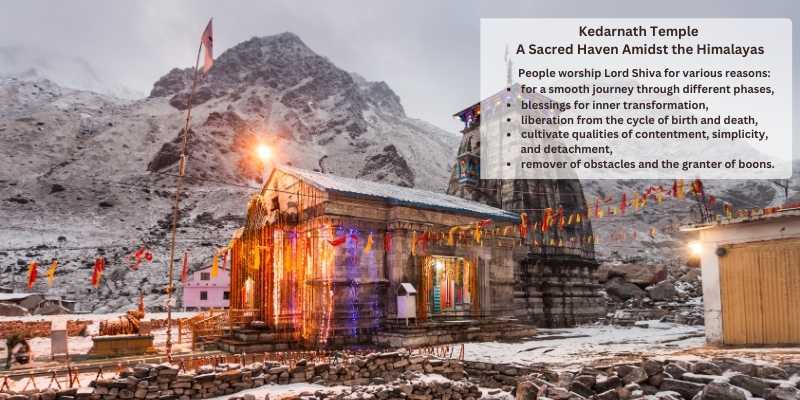Recently, allegations have emerged regarding a potential gold scam at Kedarnath Temple in Uttarakhand, India. It was said that over ₹125 crore worth of gold used to coat the walls of the temple’s sanctorum has been substituted with brass. In response, the Uttarakhand government has formed a high-level inquiry committee to investigate the alleged ₹1.25 billion scam involving the gold plating.
About Kedarnath Temple
Kedarnath Temple is a Hindu temple dedicated to Lord Shiva and is located at a height of 3,584 meters in the Garhwal Himalayan range near the Mandakini river in Uttarakhand.
According to legend, it is believed that the Pandavas, characters from the Hindu epic Mahabharata, constructed the original Kedarnath Temple. It was later reconstructed and revived by the 8th-century AD philosopher and saint, Adi Shankaracharya.
Chota Char Dham Yatra refers to the pilgrimage journey to the four sacred temples in Uttarakhand: Yamunotri, Gangotri, Badrinath, and Kedarnath. These temples hold great religious significance for Hindus and are visited by thousands of devotees each year.
Jyotirlingas are shrines where Lord Shiva is worshipped in the form of a Jyotirlingam, which represents his divine and cosmic light. There are 12 main Jyotirlinga temples in India. They are believed to represent different manifestations of the deity.
The 12 Jyotirlingas in India are:
- Somnath Jyotirlinga in Gir, Gujarat
- Mallikarjuna Jyotirlinga in Srisailam, Andhra Pradesh
- Mahakaleshwar Jyotirlinga in Ujjain, Madhya Pradesh
- Omkareshwar Jyotirlinga in Khandwa, Madhya Pradesh
- Baidyanath Jyotirlinga in Deoghar, Jharkhand
- Bhimashankar Jyotirlinga in Maharashtra
- Nageshwar Jyotirlinga in Dwarka, Gujarat
- Kashi Vishwanath Jyotirlinga in Varanasi, Uttar Pradesh
- Trimbakeshwar Jyotirlinga in Nasik, Maharashtra
- Kedarnath Jyotirlinga in Rudraprayag, Uttarakhand
- Ghrishneshwar Jyotirlinga in Aurangabad, Maharashtra
Worshipping Lord Shiva
People worship Lord Shiva for many different reasons, and they all have great respect for him and believe in his divine qualities. By worshipping him, people accept that life is short-lived and ask for his blessings to help them through the different stages of life.
Lord Shiva is linked to high spiritual disciplines like yoga and meditation. Worshippers turn to him for wisdom and protection as they strive for personal growth, self-awareness, and release from the cycle of birth and death.
Furthermore, Lord Shiva’s ascetic nature encourages people to let go of their wants and attachments to the world. By worshipping, followers try to develop traits like contentment, simplicity, and a lack of attachment.
Also, Shiva is revered as the remover of obstacles and the granter of boons. People who believe in him go to him to ask for his help in getting through life’s challenges, problems, and obstacles. They think that he is kind and that he will lead and protect them when they need it.
Lord Shiva is often seen as the personification of unity because he embraces everyone, no matter their caste, religion, or social position. His followers feel a sense of togetherness, belonging, and peace when they worship him. Lastly, many people are drawn to Lord Shiva out of pure love and devotion.
In the end, the reasons why people worship Lord Shiva are very personal and can change from person to person. People ask for his blessings and help on their spiritual journeys and in their everyday lives because they believe in him, respect him, and feel a link to his divine qualities.
